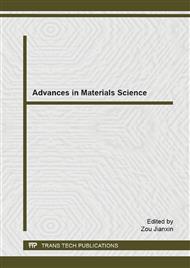p.652
p.656
p.660
p.664
p.669
p.672
p.676
p.680
p.686
Influence of the Number of Load Cycles to Obtain the Stiffness Properties of Angico Preto (Anadenanthera macrocarpa) Wood Specie
Abstract:
The tests used to obtain the stiffness properties of wood are made with two loading cycles, as defined by the Brazilian standard ABNT NBR 7190 (Design of Timber Structures). However, the possibility of reducing the number of cycles allows decrease the operating time of the machine, resulting in reduced spending on electricity used during the tests. This research aimed to investigate, with the aid of the analysis of variance (ANOVA), the influence of the use of three load cycles to obtain the modulus of elasticity in compression parallel to grain (Ec0), in tensile parallel to the grain (Et0), in bending (Em) and in compression perpendicular to the grain (Ec90) of Angico Preto (Anadenanthera macrocarpa) wood specie. For the number of cycles and stiffness were manufactured 12 samples, totaling 144 specimens. The results of the ANOVA revealed statistical equivalence between the stiffness properties for both load cycle numbers evaluated, indicating that it is possible to carry out the tests with a single charge cycle, allowing savings in time and energy in the operation of the equipment.
Info:
Periodical:
Pages:
669-671
Citation:
Online since:
February 2015
Keywords:
Price:
Сopyright:
© 2015 Trans Tech Publications Ltd. All Rights Reserved
Share:
Citation:


